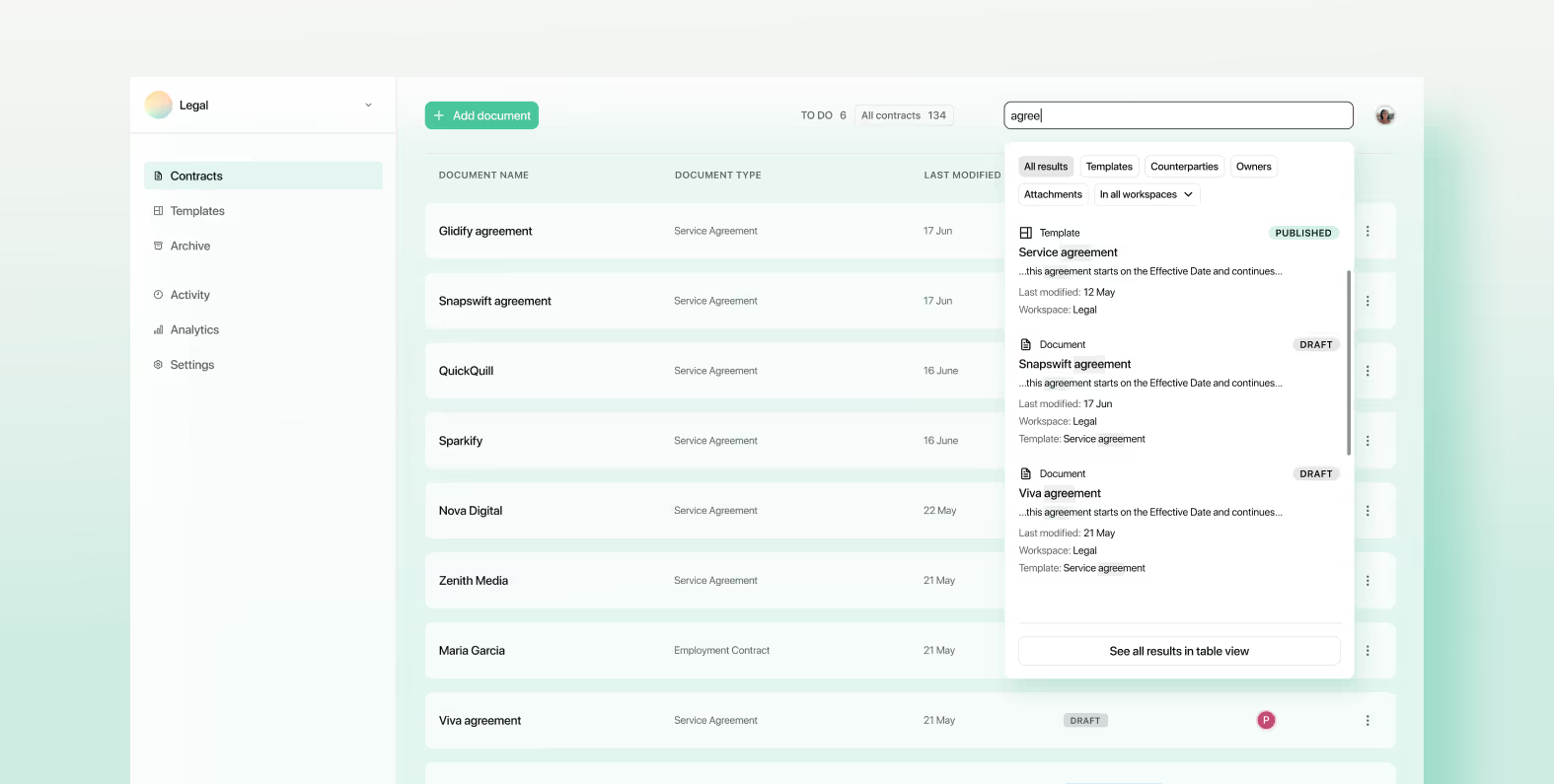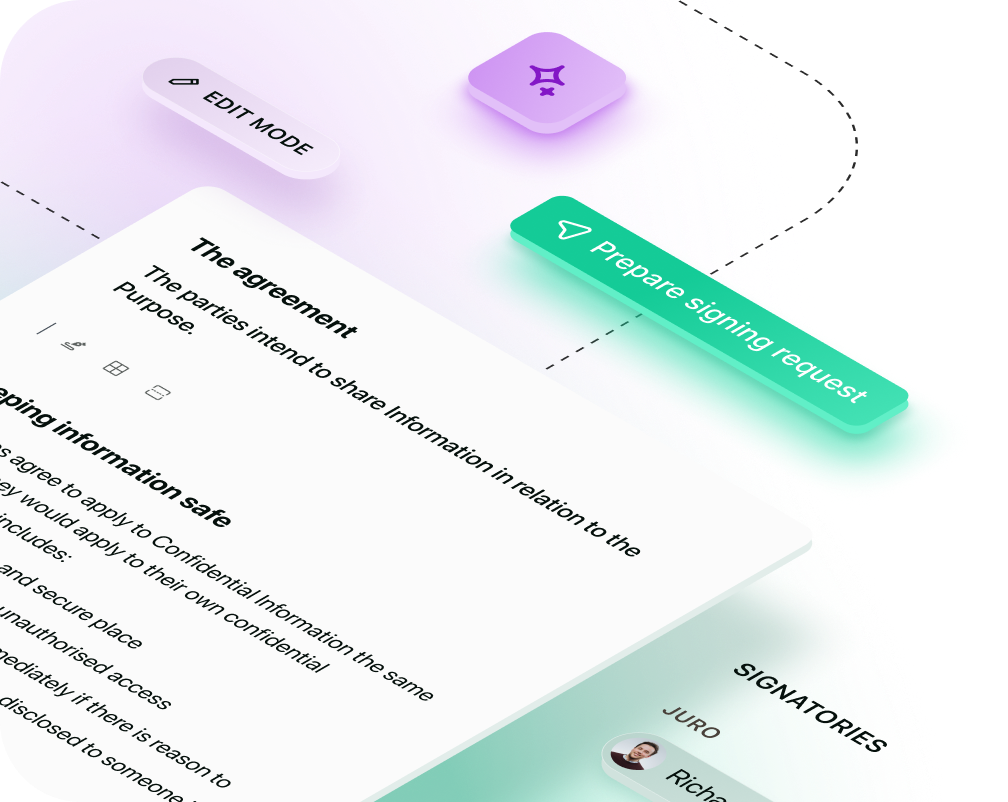Solutions
Customer Support
Resources
Looking for a product development agreement template? Download this free version today.




A well-written product development agreement sets clear terms and expectations for all parties involved in creating a new product. It minimizes misunderstandings, facilitates smooth collaboration, and protects everyone's interests.
This article offers a comprehensive guide to understanding, managing, and automating product development agreements.
A product development agreement is a contract between parties who are collaborating on the creation of a new product. This can include businesses, independent contractors, designers, engineers, and other stakeholders.
The agreement specifies the roles, responsibilities, and contributions of each party, along with timelines, payment terms, and intellectual property rights. It serves as a formal document that aligns all parties towards a common goal and ensures accountability throughout the development process.
The main purpose of a product development agreement is to set clear expectations and protect the interests of all parties involved. It serves to:
By addressing these key areas, a product development agreement helps ensure a smooth, collaborative, and successful project.

Product development agreements are typically managed by legal, HR, and commercial teams within a business. The specific team responsible can vary depending on the size and structure of the organization.
In smaller companies, the project manager or product manager might handle the agreements. These individuals are usually directly involved in the development process and have a clear understanding of the project's needs.
In medium to large businesses, however, dedicated legal teams usually handle the creation, review, and management of these contracts. They ensure that the agreements comply with legal standards and mitigate potential risks.
In some settings external stakeholders may be involved. When working with external contractors or partners, a collaborative approach is often necessary, and both parties' legal teams might be involved in drafting and reviewing the agreement to ensure mutual interests are protected.
Product development agreements are used whenever two or more parties collaborate to create a new product. Common scenarios include:
A comprehensive product development agreement template should cover the following sections:
By covering these specific sections, a product development agreement ensures clear communication, aligns expectations, and protects the interests of all parties involved in the development of a new product.

Managing product development agreement templates manually involves several steps, each of which can be time-consuming and prone to errors. First, drafting the initial agreement requires attention to detail and a thorough understanding of the project's specific needs, often starting with a standard template.
Next, the draft is circulated among stakeholders for feedback and revisions, a process that can involve multiple rounds of changes and can be slow and inefficient.
Once the draft is satisfactory, formal approval must be obtained from all parties involved, which might require several layers of sign-off, especially in larger organizations. After approval, a copy of the signed agreement needs to be securely stored, either in a physical filing cabinet or a digital folder, necessitating a reliable system for organizing and retrieving documents.
Tracking key dates and milestones to ensure compliance with the contract terms can be particularly challenging, especially when managing multiple agreements simultaneously. Additionally, any necessary amendments to the agreement require repeating many of the initial drafting and approval steps, further adding to the time and effort required.
Automating product development agreements with Juro’s AI-enabled contract management software can significantly streamline the process and eliminate many of the inefficiencies and errors associated with manual management.
Drafting: Juro's AI-native platform allows you to create initial drafts quickly using customizable templates. These templates can be pre-populated with standard clauses and terms, reducing the time spent on drafting and ensuring consistency across all agreements.
Reviewing: Juro enables stakeholders to review and comment on drafts directly within the platform. This reduces the back-and-forth typically involved in email-based reviews and speeds up the revision process. Version control ensures that everyone is working on the most current document.
Approving: With Juro, obtaining formal approval is streamlined through automated workflows. You can set up approval chains tailored to your organization’s structure, ensuring that the agreement goes through the necessary layers of sign-off efficiently. Notifications and reminders help keep the process on track.
Storing: Juro provides a secure, centralized storage solution for all your agreements. Documents are stored digitally, organized automatically, and easily searchable. This eliminates the need for physical storage and simplifies document retrieval.

Tracking: Juro's platform includes tools for tracking key dates and milestones, with automated alerts and reminders to ensure compliance with agreement terms. This helps you stay on top of deadlines and reduces the risk of missing critical dates.

Updating: Amendments to agreements can be managed smoothly within Juro. Changes can be made directly in the platform, with the updated version circulated for review and approval as needed. This ensures that all parties are always working from the most current document and that updates are handled efficiently.
Juro's AI-native contract automation platform empowers all teams to create, agree, execute and manage contracts up to 10x faster than traditional tools. To find out more, hit the button below to book your personalized demo.
Juro is the #1-rated contract platform globally for speed of implementation.


Juro embeds contracting in the tools business teams use every day, so they can agree and manage contracts end-to-end - while legal stays in control.
Book your demo